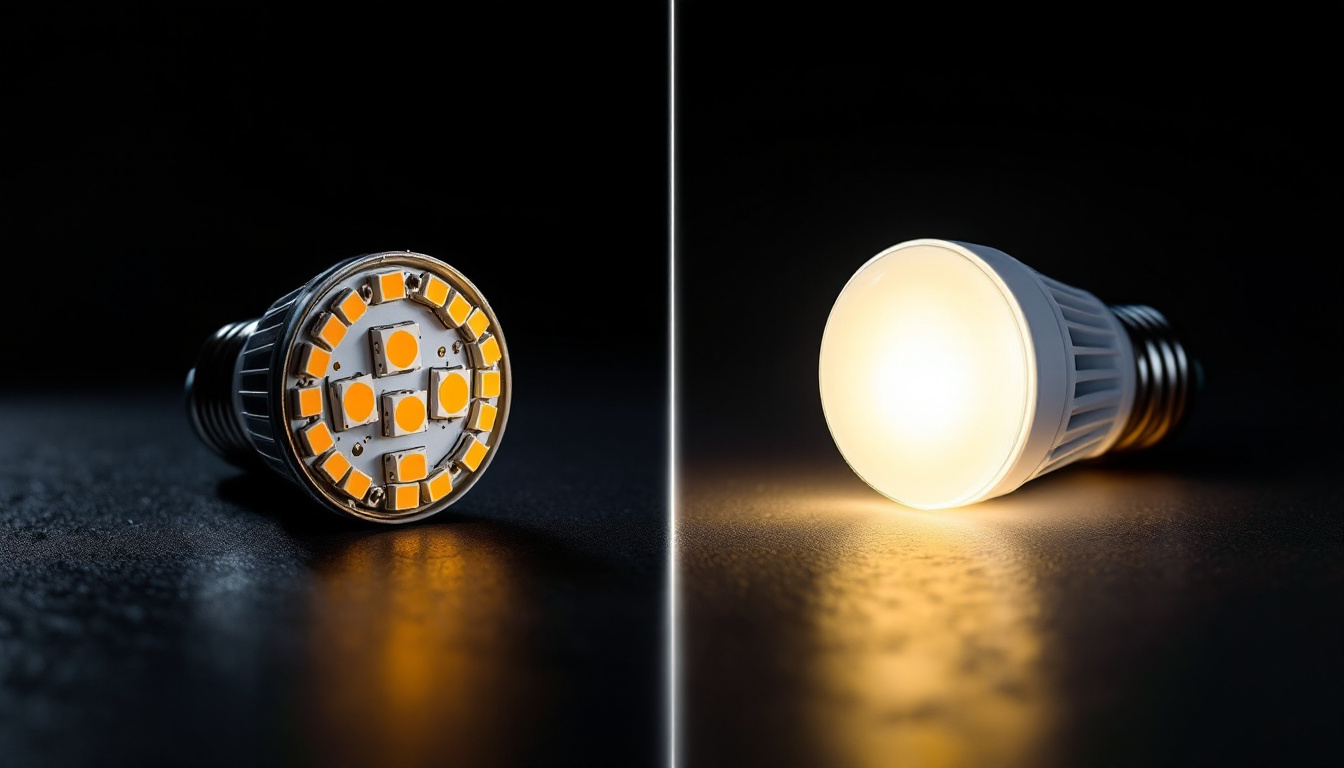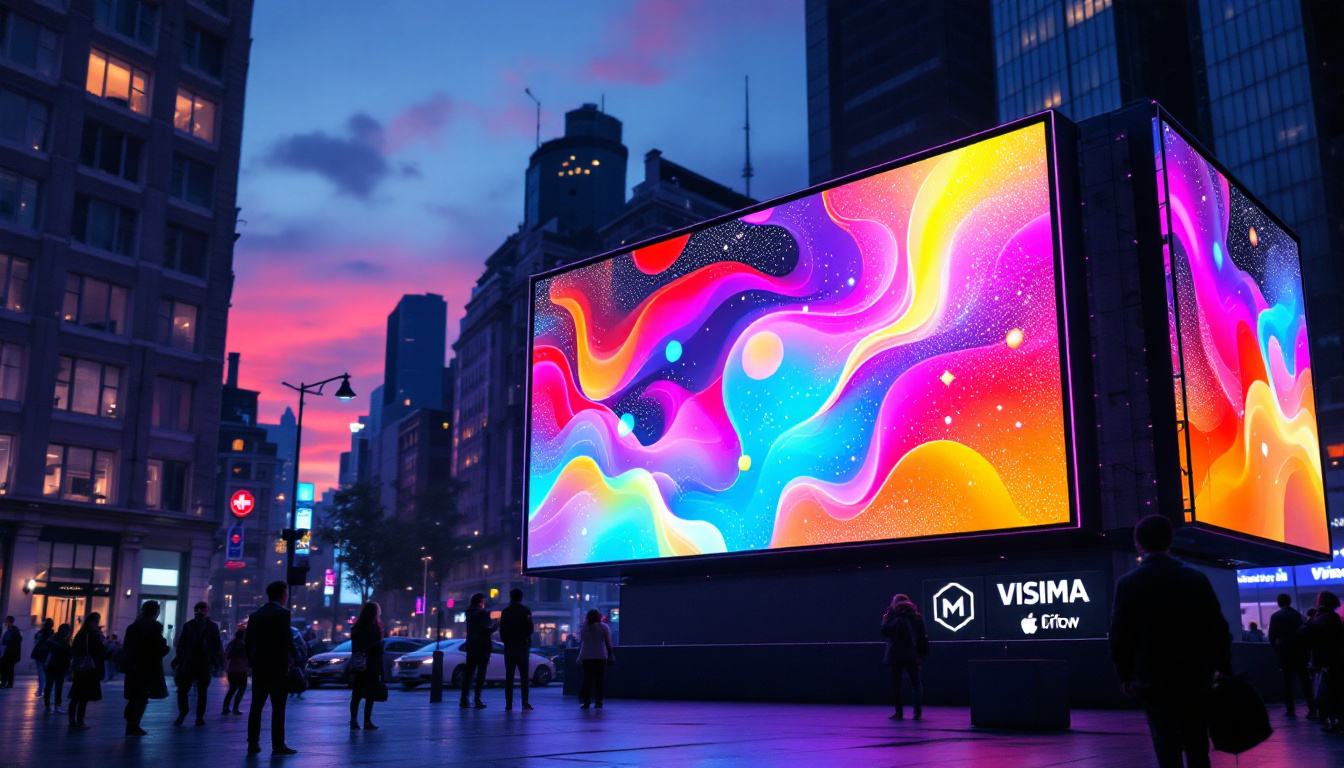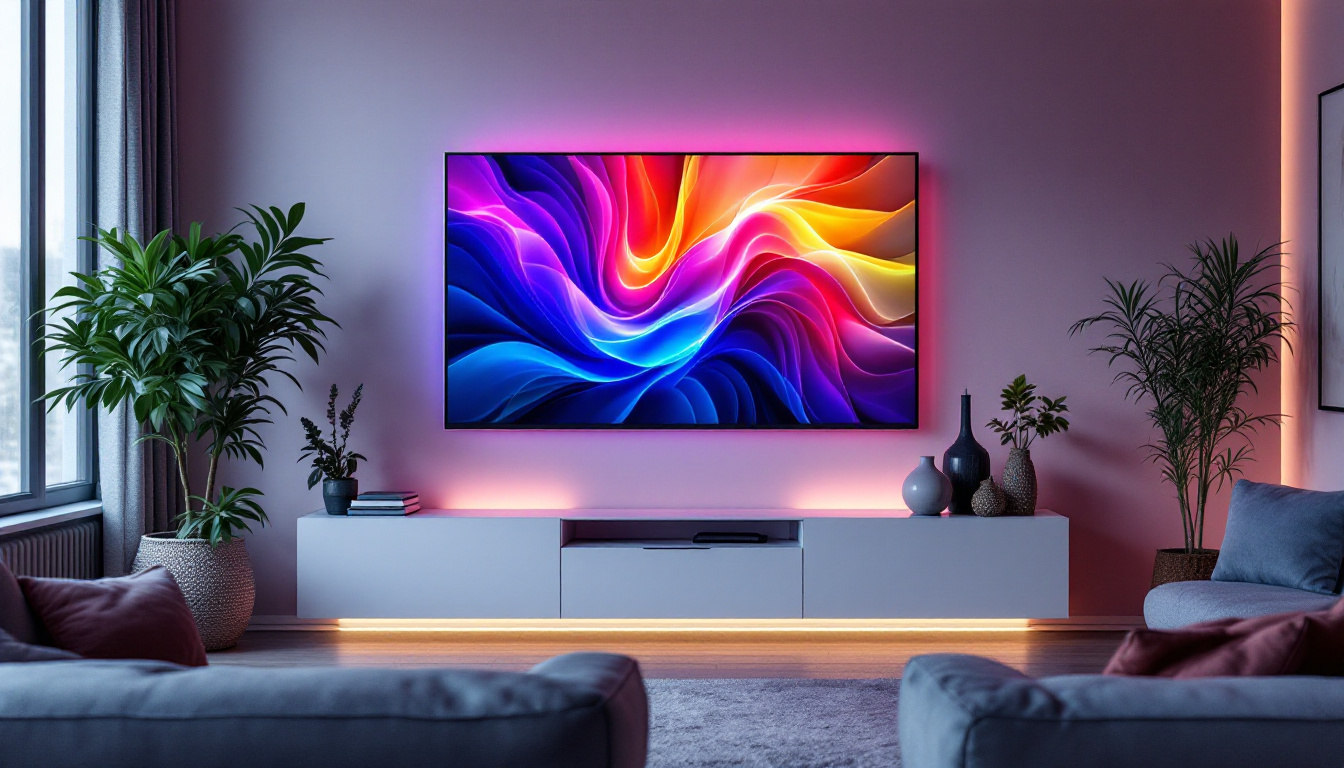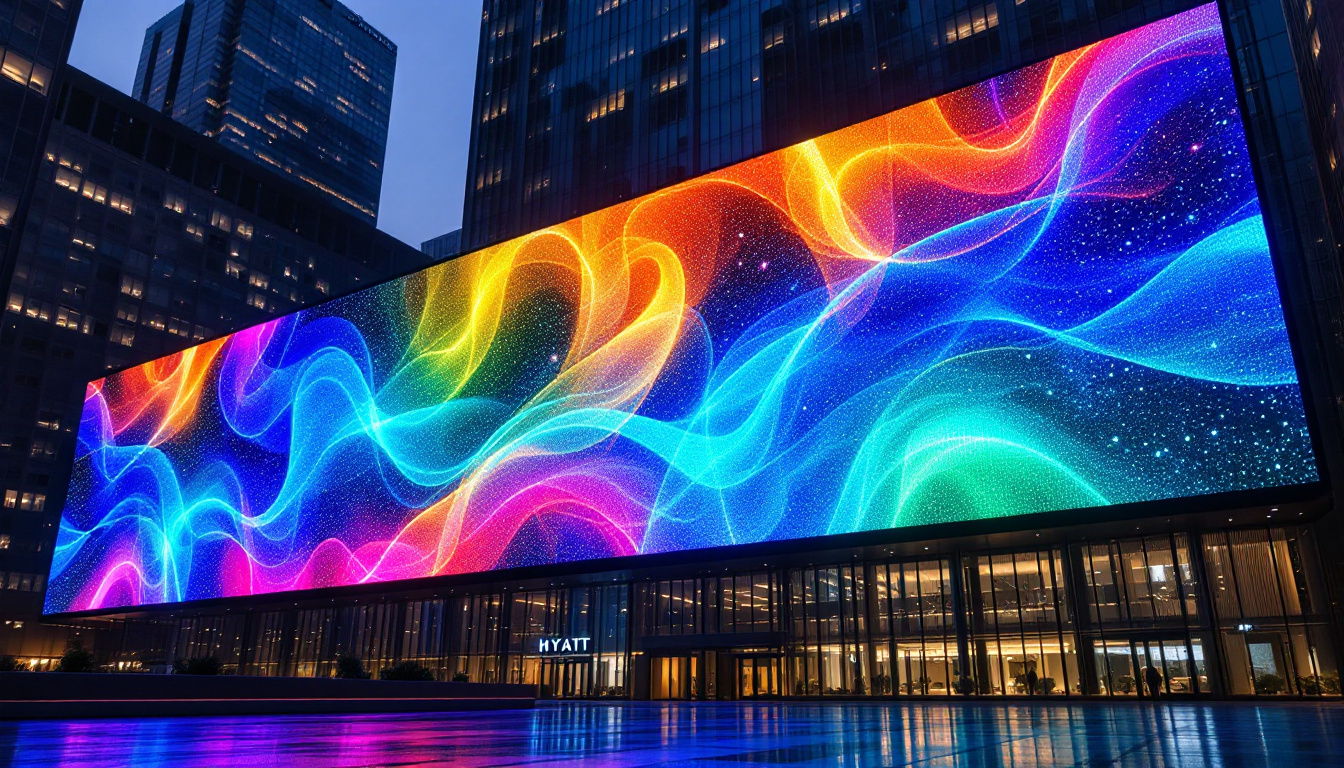SMD Bulbs Vs LED: LED Display Explained
The world of lighting technology has evolved significantly over the years, with two prominent contenders in the market being SMD (Surface-Mounted Device) bulbs and LED (Light Emitting Diode) technology. While both SMD bulbs and traditional LEDs share similarities, they differ in various aspects, including their applications, efficiency, and overall performance. This article delves into the intricacies of SMD bulbs versus LED technology, particularly in the context of LED displays.
Understanding SMD Bulbs
SMD bulbs have gained popularity due to their compact size and versatility. These bulbs are designed with multiple LED chips mounted directly onto a surface, allowing for a more efficient light output. The unique construction of SMD bulbs enables them to produce a brighter light while consuming less energy compared to traditional incandescent bulbs. This efficiency not only contributes to lower electricity bills but also supports a more sustainable approach to lighting, making SMD bulbs an environmentally friendly choice for modern consumers.
Construction and Design
The design of SMD bulbs is one of their most significant advantages. Unlike traditional LED bulbs that may have a single diode, SMD bulbs utilize multiple diodes in a single package. This arrangement not only enhances brightness but also improves color mixing, resulting in a more uniform light output. Moreover, the flat design of SMD bulbs allows for better heat dissipation, which contributes to their longevity. The innovative construction also means that SMD bulbs can be manufactured in a variety of shapes and sizes, providing flexibility for different lighting needs and aesthetic preferences. As a result, they can seamlessly integrate into various fixtures, from sleek modern designs to more traditional styles.
Applications of SMD Bulbs
SMD bulbs are widely used in various applications, including residential, commercial, and industrial settings. Their compact size makes them ideal for use in decorative lighting, such as in chandeliers or under-cabinet lighting. Additionally, SMD technology is commonly employed in LED displays, where high brightness and color accuracy are crucial. Beyond these uses, SMD bulbs are also increasingly found in automotive lighting, providing drivers with brighter and more energy-efficient options for headlights and interior lights. Their ability to withstand vibrations and extreme temperatures makes them particularly suitable for vehicles, enhancing safety and visibility on the road.
Furthermore, SMD bulbs are becoming a popular choice for smart lighting solutions. With the rise of home automation, many SMD bulbs are now compatible with smart home systems, allowing users to control their lighting remotely through smartphones or voice commands. This integration not only adds convenience but also enables users to customize their lighting experiences, adjusting brightness and color temperatures to suit different moods or activities. As technology continues to evolve, the versatility of SMD bulbs positions them as a key player in the future of energy-efficient lighting solutions.
Exploring LED Technology
LED technology has revolutionized the lighting industry, offering energy-efficient solutions that are both durable and versatile. LEDs are semiconductor devices that emit light when an electric current passes through them. They are known for their long lifespan and low energy consumption, making them a popular choice for various lighting applications.
Efficiency and Longevity
One of the most significant advantages of LED technology is its energy efficiency. LEDs consume significantly less power compared to traditional incandescent or fluorescent bulbs. This efficiency translates into lower electricity bills and a reduced carbon footprint. Furthermore, LEDs have an impressive lifespan, often lasting up to 25,000 hours or more, which means less frequent replacements and less waste.
Color Rendering and Brightness
LEDs are available in a wide range of colors and can produce high-quality white light with excellent color rendering properties. This capability makes them suitable for various applications, from general lighting to specialized tasks such as photography and art displays. The brightness of LEDs can also be adjusted, allowing for customizable lighting solutions that cater to different environments.
SMD Bulbs vs. LED: Key Differences
While SMD bulbs are a type of LED technology, there are distinct differences between SMD bulbs and standard LED bulbs. Understanding these differences can help consumers make informed decisions when choosing lighting solutions for their needs.
Light Output and Brightness
SMD bulbs typically offer higher light output compared to standard LED bulbs. The multiple diodes in SMD bulbs allow for a more concentrated and brighter light, making them ideal for applications that require high visibility, such as signage and displays. In contrast, standard LED bulbs may be more suitable for general lighting purposes where extreme brightness is not a primary concern.
Heat Management
Heat management is another critical factor distinguishing SMD bulbs from standard LEDs. The design of SMD bulbs facilitates better heat dissipation due to their flat construction. This feature not only enhances their lifespan but also improves overall performance. Standard LED bulbs, while also efficient, may not dissipate heat as effectively, which can impact their longevity in certain applications.
The Role of SMD in LED Displays
SMD technology plays a crucial role in the development of LED displays, which have become increasingly popular in advertising, entertainment, and information dissemination. The integration of SMD bulbs in LED displays has transformed how visual content is presented, offering numerous benefits.
High Resolution and Clarity
One of the primary advantages of using SMD technology in LED displays is the ability to achieve high resolution and clarity. The close arrangement of multiple diodes allows for finer pixel pitch, resulting in sharper images and more detailed graphics. This feature is particularly important for applications such as video walls, where visual quality is paramount.
Versatility in Display Applications
SMD LED displays are incredibly versatile and can be used in various settings, from large outdoor billboards to indoor screens for events and exhibitions. Their lightweight design and flexibility in size make them easy to install and configure for different environments. Additionally, SMD displays can be easily customized to fit specific requirements, whether for advertising or artistic purposes.
Advantages of SMD Bulbs in LED Displays
When it comes to LED displays, SMD bulbs offer several advantages that contribute to their popularity in the market. Understanding these benefits can provide insights into why SMD technology is often the preferred choice for display applications.
Improved Color Accuracy
SMD bulbs are known for their superior color accuracy, which is essential for creating vibrant and engaging displays. The ability to mix colors effectively allows for a broader spectrum of hues, ensuring that the displayed content appears true to life. This characteristic is particularly beneficial for applications such as digital signage, where color fidelity is crucial for brand representation.
Energy Efficiency in Displays
Energy efficiency is a significant concern for businesses investing in LED displays. SMD technology, with its high light output and low power consumption, ensures that displays can operate efficiently without incurring excessive energy costs. This efficiency not only benefits the environment but also contributes to the overall cost-effectiveness of using LED displays for advertising and information dissemination.
Challenges and Considerations
While SMD bulbs and LED technology offer numerous advantages, there are also challenges and considerations to keep in mind when selecting lighting solutions or displays.
Initial Cost and Investment
One of the primary challenges associated with SMD bulbs and LED displays is the initial cost. Although prices have decreased over the years, the upfront investment for high-quality SMD displays can still be significant. Businesses must weigh the long-term benefits of energy savings and reduced maintenance against the initial expenditure.
Potential for Color Shift
Another consideration is the potential for color shift over time. While SMD bulbs are designed to provide consistent color output, factors such as aging and environmental conditions can impact their performance. Regular maintenance and monitoring are essential to ensure that displays maintain their intended color accuracy and brightness.
Future Trends in SMD and LED Technology
The lighting and display industries are continuously evolving, with advancements in SMD and LED technology paving the way for exciting developments. As technology progresses, several trends are likely to shape the future of these lighting solutions.
Smart Lighting Integration
One of the most significant trends in lighting technology is the integration of smart features. SMD and LED bulbs are increasingly being designed to work with smart home systems, allowing users to control lighting remotely, adjust brightness, and even change colors through mobile applications. This integration enhances user experience and offers greater flexibility in lighting design.
Enhanced Sustainability Efforts
As environmental concerns continue to rise, manufacturers are focusing on sustainability in their production processes. Future SMD and LED technologies are likely to incorporate eco-friendly materials and energy-efficient designs, further reducing their carbon footprint. This shift towards sustainability will not only benefit the environment but also appeal to consumers who prioritize eco-conscious choices.
Conclusion
In the debate between SMD bulbs and LED technology, it is clear that both have their unique advantages and applications. SMD bulbs stand out for their brightness, compact design, and effectiveness in LED displays, while traditional LED technology offers energy efficiency and longevity. As technology continues to advance, the integration of smart features and sustainable practices will further enhance the capabilities of both SMD and LED solutions.
Ultimately, the choice between SMD bulbs and LED technology depends on individual needs and preferences. Understanding the differences and benefits of each can empower consumers and businesses to make informed decisions about their lighting and display solutions. As the industry progresses, it is essential to stay informed about emerging trends and innovations that will shape the future of lighting technology.
Discover the Future of LED Displays with LumenMatrix
Ready to elevate your visual communication with the latest in LED technology? Look no further than LumenMatrix, a pioneer in crafting immersive LED display modules that bring your brand to life. From the vibrancy of an Indoor LED Wall Display to the dynamic impact of a Custom LED Display, LumenMatrix offers a comprehensive range of solutions tailored to your unique needs. Experience the future of digital signage and create unforgettable visual experiences that captivate your audience. Check out LumenMatrix LED Display Solutions today and transform the way you share your message.































